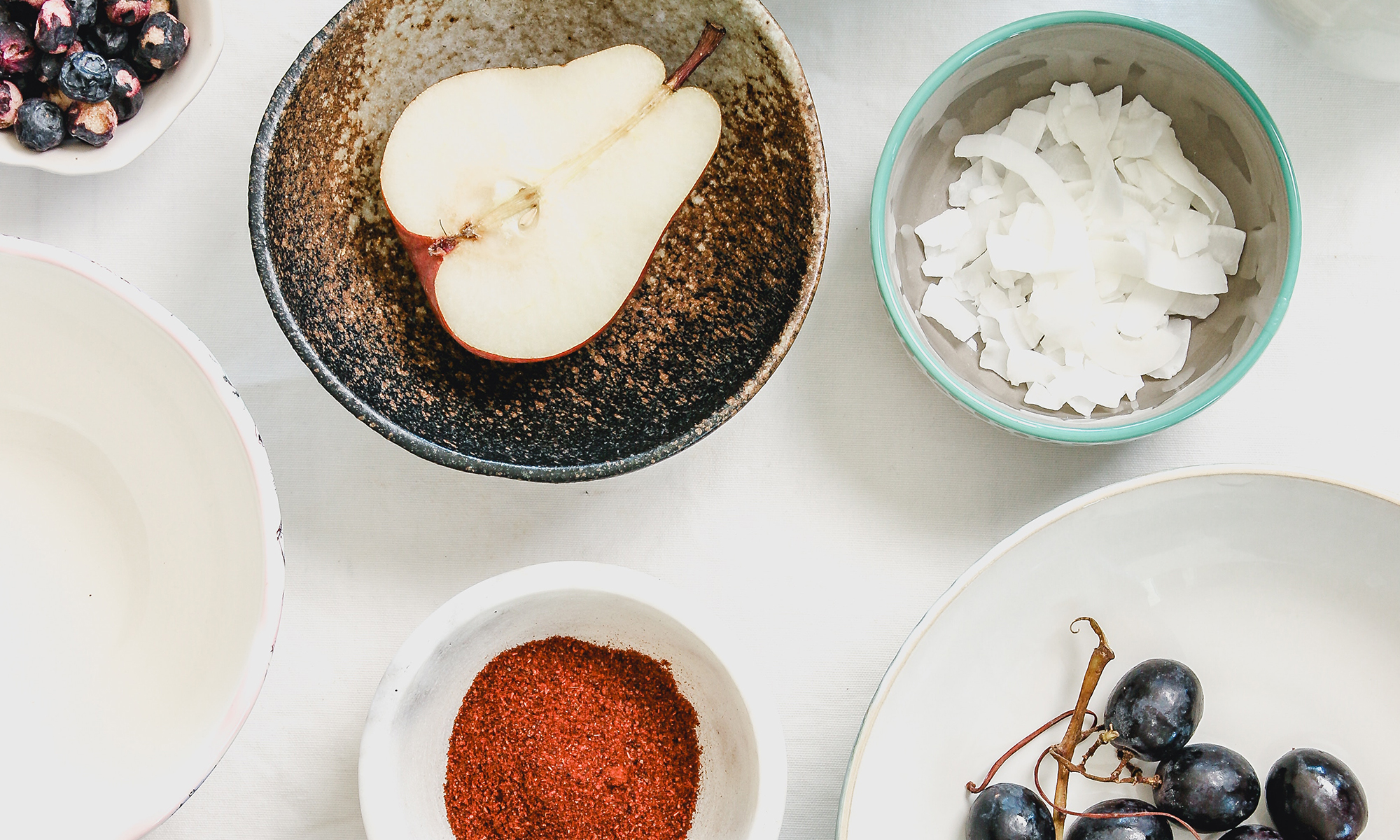This visit to the farm was under the guise of picking up my lamb. Last spring, I had done a lot of office work for Brett and my compensation was a half a lamb – raised by friends Donna and Cameron down the road. Two weeks ago, the lamb was slaughtered. After two-week of aging in the walk-in refrigerator, the meat is tenderized and ready for butchery. The prime cuts – the rack and loin chops are set aside. The stewing meat, from the shoulder and ham, are ground for sausages — chipotle and peachy mama flavored. The leg of lamb is left on the bone and makes for a generous roast. The long bones from the rack still have meat and are destined for barbecued ribs.
I arrived late Wednesday afternoon, and Brett and I promptly trotted over to the Chesapeake Bay, just yards away from the farm (actually we took the tractor, but that’s a another story). The neighbor had built a dock on the edge of his property, which creates a perfect landing for fishing and crabbing. The crab traps dangle from the base of the dock, and the bluefish and perch swim about, striped bass sometimes makes an appearance, but not often. The night before Brett had been fishing with his friend Bob so we used the skin and bones from that catch as bait for our fishing adventure. The left-over bait was put in the crab-traps… drifting on the floor of the bay, crabs meander in, eat the bait and get trapped. We set free the females and take the males. With the dwindling crab population, we want to minimize any long-term damage of harvesting sea creatures.
What did we catch, you ask? Let me put it this way: they call it “fishing,” not “catching”…. We did catch some warm breezes, mesmerizing bay views and a lone male crab – which made a delightful snack.
If we had more crabs, we would have made crab cakes:
Crab Cakes with Warm Frisee and Spinach Salad with Mustard Vinaigrette and Bacon Lardons
Crab Cakes
1 lb. crab meat
2 tbs. chopped celery
2 tbs. chopped scallion
1 tbs. chopped fresh tarragon
1 tbs. chopped fresh parsley
1 tsp. mustard
2 tbs. mayonnaise
2 tbs. bread crumbs
1 tsp. lemon zest
1 tsp. lemon juice
salt and pepper to taste
plain oil
1. Mix everything together except the oil. Season to taste with salt and pepper
2. Heat a large skillet over medium high heat. Add oil
3. Form mix into 2” crab cakes. Pan fry until crispy on each side. Serve with salad.
Vinaigrette
2 tsp. Dijon mustard
2 tsp. red wine vinegar
2 ½ tbs. extra virgin olive oil
½ tsp. fresh thyme
salt and pepper to taste
Combine mustard and vinegar in a bowl. Whisk in olive oil. Season with thyme, salt and pepper.
Salad
1 pound hardy mesclun or other salad greens such as frisee or spinach
3 slices slab bacon
1 red onion, julienned
1. Cut bacon into cubes. Cook in skillet over medium flame until it is just start to brown (but not fully crispy)
2. Add onions, turn heat to high and continue cooking for 3 minutes or until bacon and onions are crisp.
3. Drain excess fat from bacon, and toss warm bacon over greens. Dress salad with the vinaigrette. Season to taste with salt and pepper.
Next week: Lambapalooza!

